Хаас за Испания
Ромен Грожан:
You come back to Barcelona having scored points in three of the four races run thus far. When you first came to Barcelona for preseason testing in February, was the thought of being seventh in the driver standings with 22 points by the time you returned for the Spanish Grand Prix something that even entered your mind?
Not really, to be fair. I don’t like to set myself an objective, in terms of position. If I thought about where we could be, what we can do, it’s definitely better than anyone was expecting, and certainly myself. China was a good grand prix to bring us back down to earth and help us to understand a few things. Russia was good, as well. We worked hard to get P8 at the end. We’re beyond expectations, but we’ll take it. We’ve scored points three out of four times. Everyone is improving. There are still a lot of areas where we can be better. Everything has been a great achievement, and we should be able to keep that form.
Barcelona marks the first and only venue where Haas F1 Team will unload with data secured during preseason testing at the track. How valuable is it to finally have some pertinent track data before arriving at a circuit?
It’s certainly going to be useful to have data from the winter testing, even though the conditions, the temperature and everything are going to be very different. The tires are different as well – we don’t have the supersofts we used in the winter. But I think it’s still going to be good. I’m not sure it’s going to help us to set up the car initially, but it will help us to double-check everything we have done and to see if we’ve been going in the right direction since the winter testing.
As good as it is to have track data from the preseason test, so will all of the other teams. Is there any advantage beyond simply preparing for the Spanish Grand Prix?
The advantage of having data from the winter testing, and going back a few races into the season, is that you can check if you’ve been doing a good job in going in the right direction, in terms of the setup of the car and so on. I’m very much looking forward to getting back to Barcelona and trying the updates we’ve got and the setups we’ve been using. Hopefully, we’ll get more updates and then check that we’re doing the right thing with the car.
It’s been two months since you tested at Barcelona. How do you expect the track to change between then and now?
Hotter! Generally, Barcelona has good weather. The track will be the same, as we all know it very well. Just the conditions will be different. Track temperature plays a big role, especially in the last sector in Barcelona where the tires often overheat. Other than that, there’s not much difference.
In that same span, Haas F1 Team has learned a lot in a very short period of time. Can you explain the team’s growth since first coming to Barcelona at the end of February?
For everyone, it’s been a nice journey. We’re only four races into the season but what we have done, the way we have been growing up, has been impressive. Everyone is now finding their marks. There are still a few things we can improve and a few things we can certainly do better, but we are having a good run of races. We have a good group of people and the drivers are working well with the engineers. As every team, we have ups and downs but, generally, I think from the first test we were a racing team and now, four races into the season, we have shown we’re a good contender for scoring points often.
In China and in Russia you talked about how difficult it was to get your tires into a proper working temperature. Is there a certain sweet spot temperature-wise where each tire compound works the best? If so, how do you get them there?
There are cars that work better with softer tires, others with harder tires. That’s the philosophy behind the suspension and the downforce of the car. Generally, the bigger teams have less problems to get their tires to work because they normally have more downforce. For us, there are still things we can do. That’s what we worked on in Russia very well. I think we went the wrong direction in China. It was positive, in Russia and on a very difficult track, to get it right. The more we go into summer, the more we go to hot races, and the less it’s normally a problem. Still, it’s possible that in Europe, or even Canada, you can get a cold race, and then you need to set up the car accordingly.
For the first time this season, Pirelli is bringing the P Zero Orange hard tire. After four races where only the Red supersofts, Yellow softs and White mediums have been used, how challenging is to understand a new tire compound?
It’s a tire I’ve been running for a few years now. I don’t think it’s massively different from the past. To be fair, I don’t think we’re going to use them in Barcelona, unless there’s an unexpected case. I only have two sets of them for the whole weekend.
With Barcelona’s mix of corners and abrasive surface, how physically demanding is the track in terms of what you have to do behind the wheel?
It’s a very demanding track because you’ve got some high-speed corners, like the first sector, then you’ve got some very low-speed sections and corners, like the last sector of the track. It’s normally a good judge for the car, showing that you’re capable of having some good downforce at high speed and good mechanical grip in the low-speed turns. It’s going to be interesting for us. We know what we could have improved during the winter testing to get faster in Barcelona. Hopefully, it’s coming for the race. It would be interesting for us to check that we’ve been doing everything right and the updates we’re bringing work as expected.
Describe a lap around Barcelona.
Barcelona is probably the track you know best in the world. You can name every part of the layout. There’s a long straight, then the first two corners right and left. You carry quite a good speed into them, and then there’s the famous turn three, which you try to take as flat out as possible. Turn four, there’s usually some front-locking. The hairpin into turn five, going down you don’t see the apex until late, so it’s a tricky corner. Turns seven and eight going up the hill lead to the very high-speed turn nine, which has a new curb on exit. Then you get to the hairpin at turn 10, which is very tricky under braking. Turns 11-15 are almost one corner – as a complex, it’s difficult to get a good flow around those corners. You need to get a good balance there. Turn 16 is the last corner and you want to try to stay as flat-out to prepare for the straight and get a good lap time.
Естебан Гутиерес: Barcelona marks the first and only venue where Haas F1 Team will unload with data secured during preseason testing at the track. How valuable is it to finally have some pertinent track data before arriving at a circuit?
I believe that it will be very positive for the team to make a proper comparison from where we started on testing, as we have a pretty good reference from that, and also where we are right now. It will be good to see how far we’ve progressed and it will also allow us to understand the car better. I think that will be a very important step.
As good as it is to have track data from the preseason test, so will all of the other teams. Is there any advantage beyond simply preparing for the Spanish Grand Prix?
It makes a good difference because you arrive with certain data, and you can predict a little bit better from that data. Straight away, it puts us in a more knowledgeable position approaching the weekend. It allows us to be better prepared. Other teams have a lot of data from the past years, but for us, everything is new. This is the first time that we will arrive with some proper data so that we can really focus on maximizing and fine tuning the car during the weekend.
It’s been two months since you tested at Barcelona. How do you expect the track to change between then and now?
It will be pretty different because the weather conditions will be very different. Preseason testing was a bit on the cold side, a bit like it was at Shanghai and Russia, which didn’t really make things very easy for us. But now that we’re approaching the summer, the weather will be better, a bit warmer, and that will help us to have a bit more consistency. It will take away a little bit of a variable for us to be on the limit of the tire’s working range.
In that same span, Haas F1 Team has learned a lot in a very short period of time. Can you explain the team’s growth since first coming to Barcelona at the end of February?
The biggest difference is how the team is working together. Race by race I feel the team is progressing very, very quickly. We’ve taken advantage of the things we’ve done well and when things haven’t gone as well, we’ve adapted and learned quickly.
In China and in Russia you talked about how difficult it was to get your tires into a proper working temperature. Is there a certain sweet spot temperature-wise where each tire compound works the best? If so, how do you get them there?
Overall, the tires have a different working range depending upon the compound. Ideally, the setup of your car allows you to get into those proper working ranges quickly and, just as importantly, stay there. When the conditions are a bit colder, it’s harder to get into those working ranges and it exacerbates any little issues you have with your car.
For the first time this season, Pirelli is bringing the P Zero Orange hard tire. After four races where only the Red supersofts, Yellow softs and White mediums have been used, how challenging is to understand a new tire compound?
Any tire compound will suit the cars in different ways. The harder the compound, the less grip you have. Each compound has certain characteristics that are crucial to understand in order to make the tire work as it relates to your car’s setup. For us, we’re going with the mediums and the softs. We only have one set of hards.
With Barcelona’s mix of corners and abrasive surface, how physically demanding is the track in terms of what you have to do behind the wheel?
I would say the most difficult part is sector one and two, which has long corners and quite a high load in terms of downforce. It puts quite a lot of load on the neck, especially. For the rest, I don’t think it’s going to be a huge challenge. It has been very important to get well prepared and I am feeling very well every race. It’s just a different characteristic. We come from Russia where turn three is a left-hand corner, very long, and now we’re going to Barcelona which has a lot of right-hand corners. It’s very long and very fast, and we’ll feel that mostly in our neck muscles.
Describe a lap around Barcelona.
Barcelona is a track we use a lot for testing. It’s probably the track that I have done the most laps in my career. You come into the first section into turn one, focused on the entry speed and also the line, in preparation for turn two and turn three, which is crucial in order to have a good exit out of the famous and fast turn three of Barcelona. Approaching into turn four, you have a very sharp brake to turn in very quickly, carrying the speed into the corner. The exit is very long with a lot of load on the rear tires. You arrive into turn five, it’s a bit downhill, quite a slow corner, on braking you don’t really see the entry well and, at the same time, it is very important not to miss the apex. Turn seven is very sharp. The corner has some banking, which makes it faster than what you can see from outside approaching. Then into turn nine, it’s uphill. You turn in with very small brake, and a short lift on the throttle. The exit is a bit blind, and the car usually is moving around, trying to go on power as quickly as possible and a very, very fast corner. From turn 10 onward, you have the first sector which is usually very challenging because of the tire temperatures. You have the tires heated up from the previous two sectors and it makes it the most important and challenging part of the track because it’s where you can gain or lose a lot of time as it is the most technical part of the track.
Гюнтер Щайнер: You come back to Barcelona having scored points in three of the four races run thus far. When you first came to Barcelona for preseason testing in February, was the thought of being fifth in the constructor standings with 22 points by the time you returned for the Spanish Grand Prix something that even entered your mind?
To be honest, no. But we are very happy and we’ll take it.
Barcelona marks the first and only venue where Haas F1 Team will unload with data secured during preseason testing at the track. How valuable is it to finally have some pertinent track data before arriving at a circuit?
It’s one of the things we look forward to because we can compare what we’ve got now with what we started off with. We finally have something to compare ourselves to. On all the other tracks, we’ve got no data at all, and we’ll have no data at all until we come back next year. So, it’s quite nice to go to Barcelona.
As good as it is to have track data from the preseason test, so will all of the other teams. Is there any advantage beyond simply preparing for the Spanish Grand Prix?
No real advantage. It’s just a reality check. We can check what we’ve done over the last four races.
It’s been two months since you tested at Barcelona. How do you expect the track to change between then and now?
It looks to be a hot weekend, so that will be different from testing. The track, for sure, will be different.
In that same span, Haas F1 Team has learned a lot in a very short period of time. Can you explain the team’s growth since first coming to Barcelona at the end of February?
The team has made significant steps. In Barcelona, we had people working day and night, and we had a very good start to the test. The second week was not so good. Then we went to Australia and got sixth. The team has developed a lot in these two months from where we were, but it’s normal for a new team. It’s a very good thing that we’re growing and making improvements. We’re a lot better team now than we were two months ago.
Barcelona marks the first European race on the Formula One schedule. Typically, many teams bring updates to their cars for the Spanish Grand Prix. Does Haas F1 Team have any updates for its cars?
It’s just about making developments to make the car go faster, and how you do that is everybody’s own secret. We’ve made a few changes to the car. We’ve got a new front wing that we tested for the first time in Russia, and we’ve got a new rear wing that we’ll race for the first time in Barcelona. We won’t have big changes on a set schedule. We’ll introduce new parts when we feel we’ve made enough gains. New parts from our development will trickle in every few races, just like every other team does.
You brought a new front wing to China, but didn’t run it much. You utilized it more in the most recent race at Russia. How did it perform?
We started to run with it in China, but we had some other issues to work out so we decided not to focus on the new front wing. We left the old wing on because we knew that the original wing worked. We re-tested it during FP1 in Russia and both drivers liked it. It makes the car more stable around the track in cornering, so we’ve decided to use the new wing going forward.
In China and in Russia, the drivers talked about how difficult it was to get their tires into a proper working temperature. Is there a certain sweet spot temperature-wise where each tire compound works the best? If so, how do you get it there?
Every tire works in a certain window and, in Russia, with the low-grip surface and cold temperature, we had a hard time getting it to work. With the warmer weather in Spain, I hope we don’t have those problems again, but we can’t predict or forecast it.
For the first time this season, Pirelli is bringing the P Zero Orange hard tire. After four races where only the Red supersofts, Yellow softs and White mediums have been used, how challenging is to understand a new tire compound?
I don’t think it’s challenging. It’s just a matter of putting them on and seeing how they’re doing. I don’t think we will use the hard compound a lot and we didn’t pick a lot of them. We’ll put them on in FP1 and FP2, go through the motions and see how the tire is doing to decide if this is a tire that will work for us or not.
Because the surface at Barcelona is abrasive, each driver will have to make at least two pit stops, perhaps even three. Since this race will put a premium on pit stops, how is the team’s pit-stop preparation?
Since Australia, all of our pit stops have been within a three-second region, which is not too bad for a new team. It’s better to have all of our stops within the three-second region rather than having a 2.5-second stop and then a six-second stop. We just need to stay consistent in a good area.
One element of practicing pit stops has been simulating a nose replacement. Grosjean had to have a nose replacement in China. Gutierrez needed a nose replacement in Russia. How have these situations made the team better prepared to make these changes during a race?
In China, it took us about 40 seconds to change the nose. In Russia, it was under 12 (seconds). We changed how the nose is attached to the car and the guys practiced a lot. I hope we don’t have many more nose changes, because that means you’re at the back of the field and in a very difficult position to score points.
Rule changes are coming for 2017, but how much needs to be changed considering how competitive the racing has been this year, particularly in the middle of the field?
In the midfield, it is very tight because it is so competitive. With the new regulations coming in next year with wider cars, I hope that competitiveness moves up to the first, second and third place as well. The aim with the new regulation is to have a level playing field, but it’s very difficult to answer whether it will help or not at this time.


















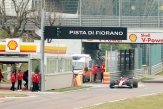
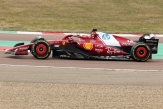
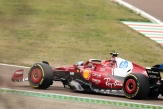
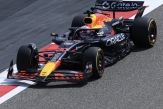
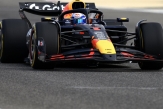
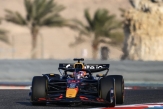

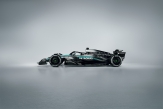
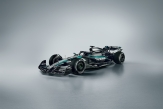
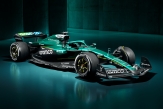
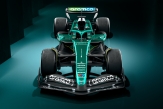
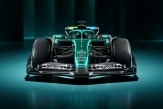
.jpg)
.jpg)
.jpg)

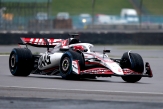

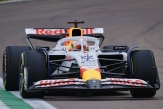
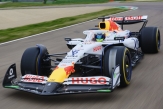
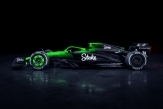
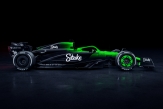

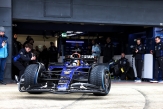
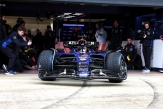
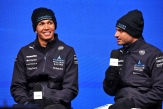

02/12/2025 от Огнян Тенчев (drJeckyll), няма коментари